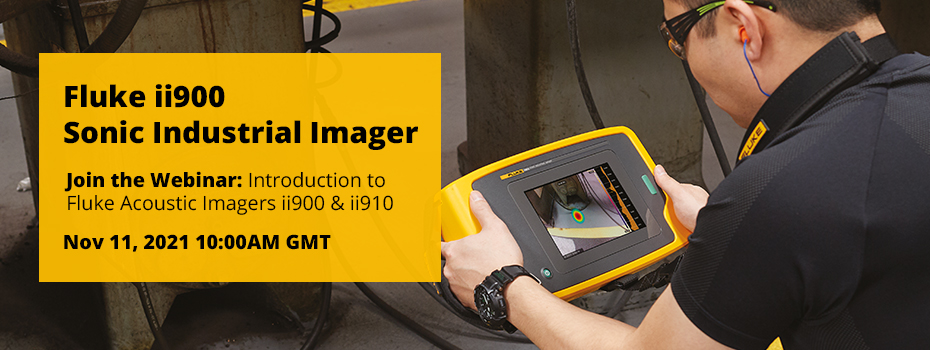 Predictive maintenance is essential for sustaining uptime, reducing repair costs, and maximising profits. Often these routines involve checking for leaks in air, gas, steam and vacuum systems, or partial discharge in power distribution systems and high-voltage equipment. Acoustic imaging provides a simpler, quicker, and safer method of spotting these problems at an earlier stage enabling easier, cheaper, and more convenient repair.[1]
Continue reading →
Predictive maintenance is essential for sustaining uptime, reducing repair costs, and maximising profits. Often these routines involve checking for leaks in air, gas, steam and vacuum systems, or partial discharge in power distribution systems and high-voltage equipment. Acoustic imaging provides a simpler, quicker, and safer method of spotting these problems at an earlier stage enabling easier, cheaper, and more convenient repair.[1]
Continue reading →Electrical
-
Seeing Sound with the Fluke ii910 Precision Acoustic Imager
 Predictive maintenance is essential for sustaining uptime, reducing repair costs, and maximising profits. Often these routines involve checking for leaks in air, gas, steam and vacuum systems, or partial discharge in power distribution systems and high-voltage equipment. Acoustic imaging provides a simpler, quicker, and safer method of spotting these problems at an earlier stage enabling easier, cheaper, and more convenient repair.[1]
Continue reading →
Predictive maintenance is essential for sustaining uptime, reducing repair costs, and maximising profits. Often these routines involve checking for leaks in air, gas, steam and vacuum systems, or partial discharge in power distribution systems and high-voltage equipment. Acoustic imaging provides a simpler, quicker, and safer method of spotting these problems at an earlier stage enabling easier, cheaper, and more convenient repair.[1]
Continue reading → -
The Importance of Qualified Electricians When Setting Up Electricity in a Self-Build
Thinking of building your own property? You’ll need the help of a reliable local electrician to get your property connected to the energy grid! Continue reading → -
Fluke & PASS Webinar: Introduction to Fluke ii900 & ii910 Acoustic Imagers
 PASS Ltd has partnered with Fluke to bring you an enlightening webinar about the applications and advantages of acoustic imaging, as well as a brief introduction to Fluke’s ii900 and ii910 Sonic Industrial Imagers.
Continue reading →
PASS Ltd has partnered with Fluke to bring you an enlightening webinar about the applications and advantages of acoustic imaging, as well as a brief introduction to Fluke’s ii900 and ii910 Sonic Industrial Imagers.
Continue reading → -
What Are CAT Ratings?
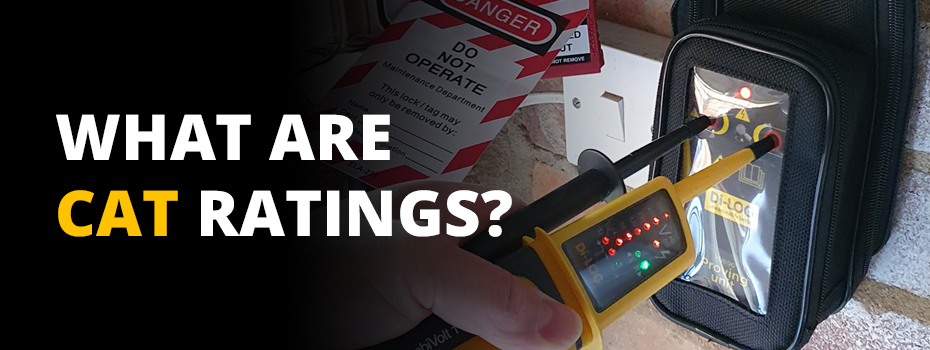 In summary, CAT ratings are overvoltage categories; they are safety ratings that indicate the types of electrical environments in which test and measurement instruments can be safely used. Understanding these categories is crucial to ensuring that you select the correct tool when working on an electrical installation.[1]
Continue reading →
In summary, CAT ratings are overvoltage categories; they are safety ratings that indicate the types of electrical environments in which test and measurement instruments can be safely used. Understanding these categories is crucial to ensuring that you select the correct tool when working on an electrical installation.[1]
Continue reading → -
Buy a Fluke, Get a Free Fluke
This blog was originally published on the 1st September 2021. It was updated on the 7th December 2021 to reflect that the offer has been extended until the 15th January 2022. Buy a Fluke Get a Free Fluke is Back! Spend £100 or more on any qualified Fluke product between September 1, 2021 and January 15, 2022 and choose a free Fluke Tool/Tester! Get more for your money this Autumn with Fluke!
Continue reading →
Buy a Fluke Get a Free Fluke is Back! Spend £100 or more on any qualified Fluke product between September 1, 2021 and January 15, 2022 and choose a free Fluke Tool/Tester! Get more for your money this Autumn with Fluke!
Continue reading → -
What do you need to know about the 5th Edition?
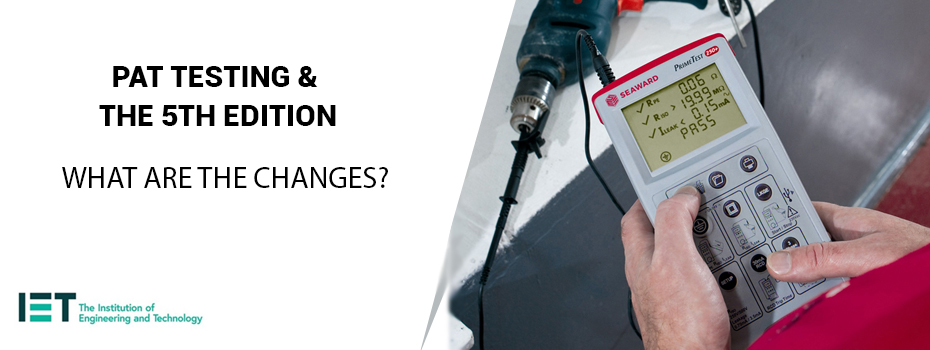 In September last year, the new Code of Practice (5th edition) for inspection and testing of electrical appliances was released by the IET. It provides full guidance on the standards that are required for electrical appliance safety, along with advice on determining whether electrical equipment is fit for continued use.
Continue reading →
In September last year, the new Code of Practice (5th edition) for inspection and testing of electrical appliances was released by the IET. It provides full guidance on the standards that are required for electrical appliance safety, along with advice on determining whether electrical equipment is fit for continued use.
Continue reading → -
An Introduction to HIKMICRO's Smartphone thermal cameras WEBINAR
HIKMICRO are about to launch their new generation mini smartphone thermals in the UK. Be one of the first to find out more about how these new handheld thermography products can help you in your day-to-day work! Continue reading →
Continue reading → -
Seaward Apollo 600+ Case Study: TECC
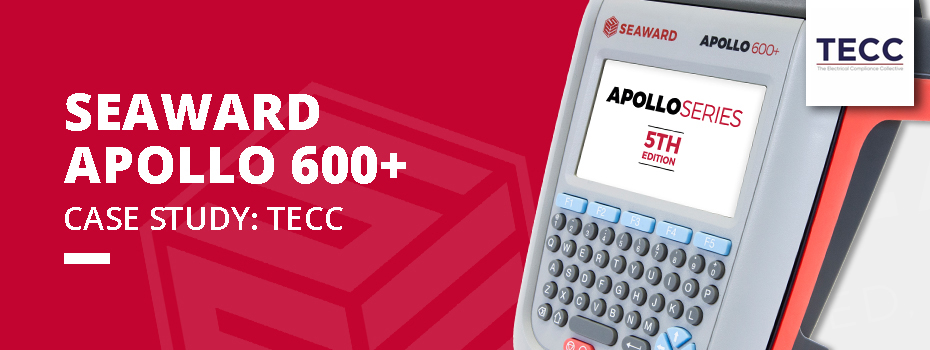 TECC, The Electrical Compliance Collective Ltd, is a specialist electrical contracting business using Seaward test equipment to standardise company-wide testing protocols with a view to facilitating a nationwide expansion.
Continue reading →
TECC, The Electrical Compliance Collective Ltd, is a specialist electrical contracting business using Seaward test equipment to standardise company-wide testing protocols with a view to facilitating a nationwide expansion.
Continue reading → -
Seaward Apollo 600+ Case Study: Oxfordshire City Council
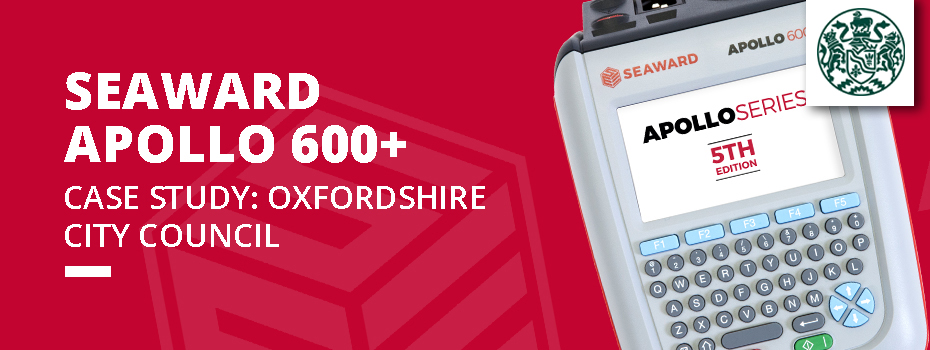 Oxfordshire City Council commissions ODS (Oxford Direct Services) to maintain council properties including 7000 residential homes, as well as parks and streets across the county. To fulfil such an important, varied, and large-scale contract, ODS employ a team of over 200 builders, plumbers, electricians, and other skilled tradesmen to conduct maintenance and repair work. Staff use company equipment, therefore, to ensure their safety ODS has implemented a preventive maintenance program. As part of this program, Seaward equipment, such as the Apollo 600+ with PATGuard 3 Software, is used to check the electrical safety of company equipment including drills, portable lighting, vacuum cleaners, heaters, compressors, and batteries.
Continue reading →
Oxfordshire City Council commissions ODS (Oxford Direct Services) to maintain council properties including 7000 residential homes, as well as parks and streets across the county. To fulfil such an important, varied, and large-scale contract, ODS employ a team of over 200 builders, plumbers, electricians, and other skilled tradesmen to conduct maintenance and repair work. Staff use company equipment, therefore, to ensure their safety ODS has implemented a preventive maintenance program. As part of this program, Seaward equipment, such as the Apollo 600+ with PATGuard 3 Software, is used to check the electrical safety of company equipment including drills, portable lighting, vacuum cleaners, heaters, compressors, and batteries.
Continue reading → -
4 Things to Consider When Installing an EV Chargepoint
 The UK government announced a series of measures to end the country’s contribution to climate change by 2050 and achieve a greener transport future. These steps include phasing out the sale of new petrol and diesel cars/vans by 2030 and ensuring that all new cars/vans are fully zero-emissions at the tailpipe from 2035. Plans are supported by over £1.8 billion of government funding intended to encourage the uptake of greener vehicles. Funding includes grants for purchasing zero or ultra-low emissions cars/vans, as well as grants for local authorities, businesses, and homeowners to install EV chargepoints. The UK government has pledged £1.3 billion to accelerate the installation of electric vehicle charging stations in homes and on streets across the UK, as well as on motorways in England.[1] However, installing an EV charger is not as simple as just connecting it to your electricity supply. There are many factors to consider and electrical parameters that need to be monitored. Investing in a portable energy logger, such as Chauvin Arnoux’s PEL103, provides an easy, ergonomic, and economic solution to evaluating your company’s capacity to support multiple EV chargepoints.[2]
Continue reading →
The UK government announced a series of measures to end the country’s contribution to climate change by 2050 and achieve a greener transport future. These steps include phasing out the sale of new petrol and diesel cars/vans by 2030 and ensuring that all new cars/vans are fully zero-emissions at the tailpipe from 2035. Plans are supported by over £1.8 billion of government funding intended to encourage the uptake of greener vehicles. Funding includes grants for purchasing zero or ultra-low emissions cars/vans, as well as grants for local authorities, businesses, and homeowners to install EV chargepoints. The UK government has pledged £1.3 billion to accelerate the installation of electric vehicle charging stations in homes and on streets across the UK, as well as on motorways in England.[1] However, installing an EV charger is not as simple as just connecting it to your electricity supply. There are many factors to consider and electrical parameters that need to be monitored. Investing in a portable energy logger, such as Chauvin Arnoux’s PEL103, provides an easy, ergonomic, and economic solution to evaluating your company’s capacity to support multiple EV chargepoints.[2]
Continue reading →


